Explore why pinecones open and close in this easy pinecone experiment. A fun nature themed science activity!
Pinecones are one of my favorite nature items to collect. Well, aside from rocks and acorns 🙂 Lets just say I have a hard time passing up a pretty pinecone when walking around outside!
This experiment was inspired by the pinecones I find scattered on the ground. Sometimes they are open other times they are closed. In this science activity, you can explore what makes pinecones open and close.
You only need a few basic supplies and your observation skills!
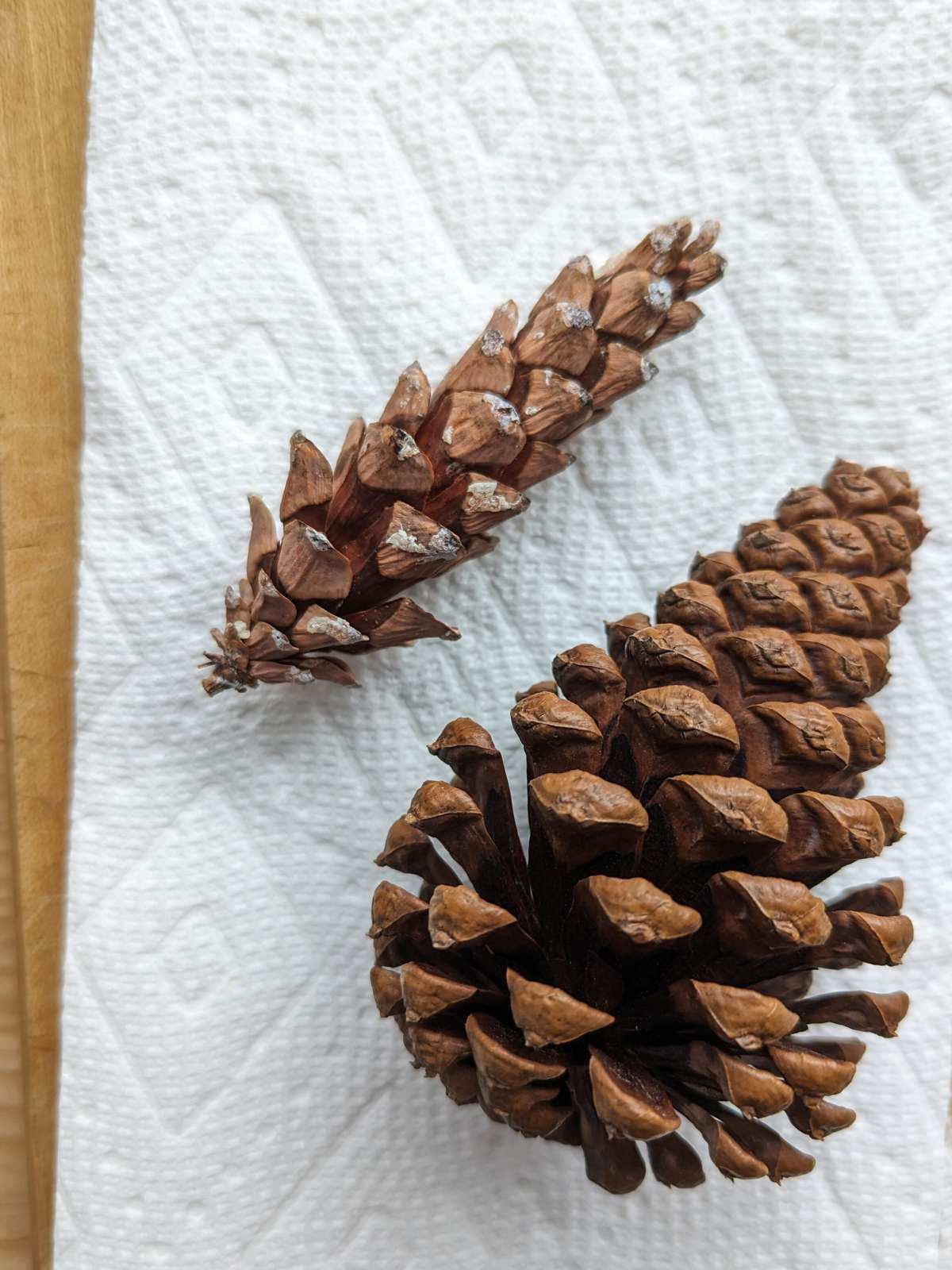
This Post May Contain Affiliate Links. Please Read Our Disclosure Policy.
Love pinecones? Make sure to check out these pinecone coloring pages!
Pinecones close to protect their seeds from poor weather conditions. Once conditions are right, the pinecone will open and the seeds can be dispersed!
In this activity, you and your child can observe a pinecone opening and closing in "wet" and "dry" conditions.
Jump to:
Age Range
- Preschool
- Kindergarten
- Elementary
I love how you can do this pinecone activity with a wide range of ages. You can explore pinecones as part of a nature club, science lesson, or just as a fun weekend activity.
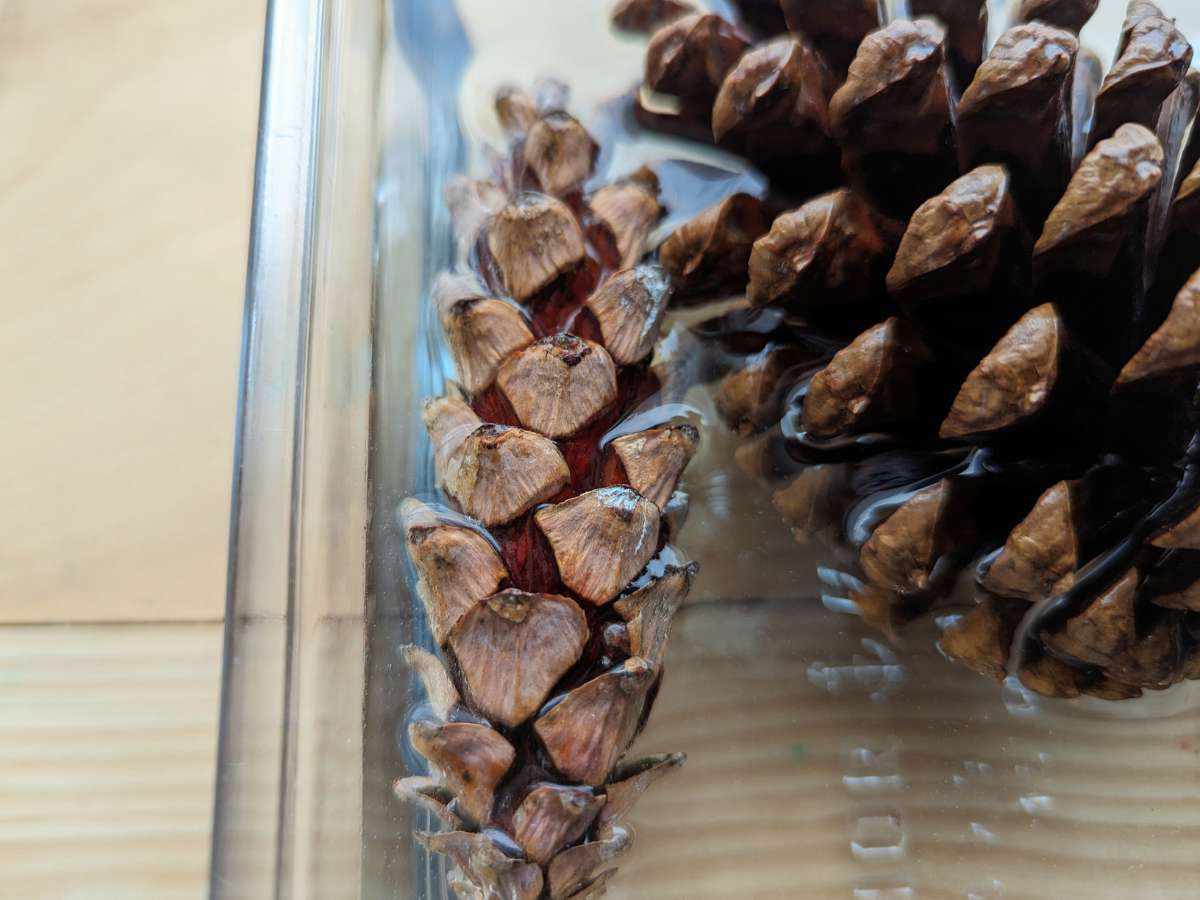
Great for multi-age settings including homeschool and co-ops. You can set this up as a demonstration or let kids observe the pinecones in small groups.
Skills to Practice
- Observations
- Critical Thinking
- Communication
- Problem Solving
- Scientific Drawings
This easy activity is a great way to practice a wide range of skills. From making observations to problem solving.
Let your child look at each pinecone using a magnifying lens. You can then draw an illustration of the pinecones at each stage.
You will want to start with dry pinecones that are open. After placing them in water, the pinecones will close.
After you do this activity, don't be surpirsed if your child (and you) have many questions you want to explore. You can even designs your own experiment based off of what you observe!
Ideas include:
- Does the water temperature effect the time to close?
- Do different species open and close at the same time?
- Does the size of the pinecone effect the time it takes to open and close?
Topics to Explore
- Different Species of Pincones
- Life Cycle of a Pine Tree
- Parts of a Plant
- Seeds
Pinecones alone are pretty fascinating to look at and explore. Not only are they super cool looking but different species of pine trees produce different looking cones.
This activity ties in well with a lesson plan about the life cycle of a pine tree.
Materials
- Dry Pinecones - I used two different species (Carolina Pine and White Pine)
- Water- enough to fill the dish two inches from the top
- Clear Glass Baking Dish- or One Glass Jar per Pinecone
- Paper Towels
- Magnifying Lens- Optional, but so much fun to use!
I used a glass baking dish for this activity, but you can use a large bowl or even tall jars. Whatever you decide to use, just make sure the pinecone can fit inside.
You also want to see through the container to watch the pinecone close. I recommend using something made of glass.
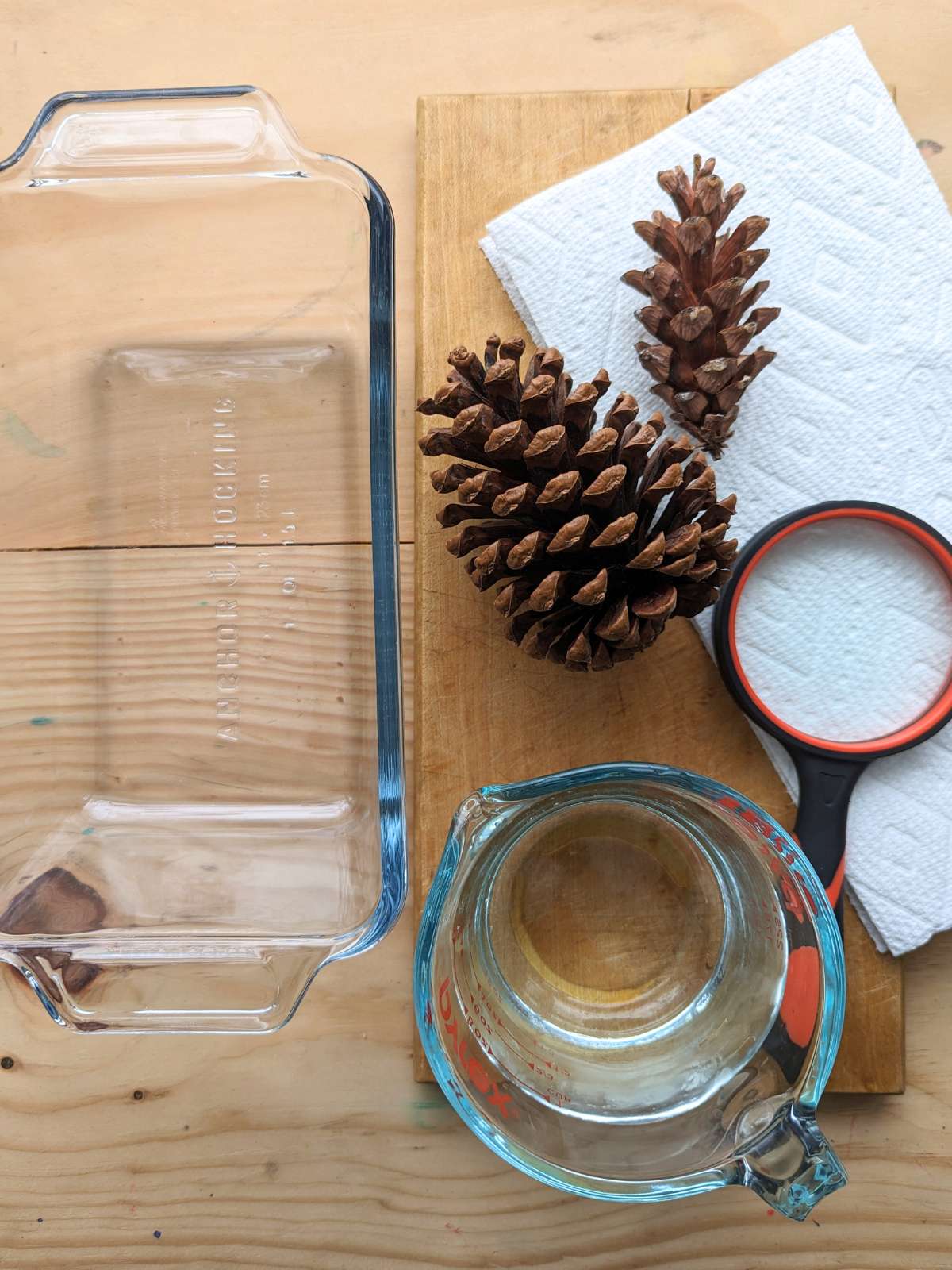
Before doing this activity, go outside and find a few pinecones with your kids. Up here in NH we have White Pines, Scotch Pines, and Hemlocks.
I was able to use a Carolina Pine in this activity that was gifted to me by a friend. Along with a White Pine pinecone that I found outside. I also tested using a Scotch Pine, but didn't take photographs.
It's important to start with open pinecones. I left mine inside for a few days prior to conducting this experiment.
Directions
Prepare the glass baking dish by filling it with water. I filled mine about an inch or two before the top.
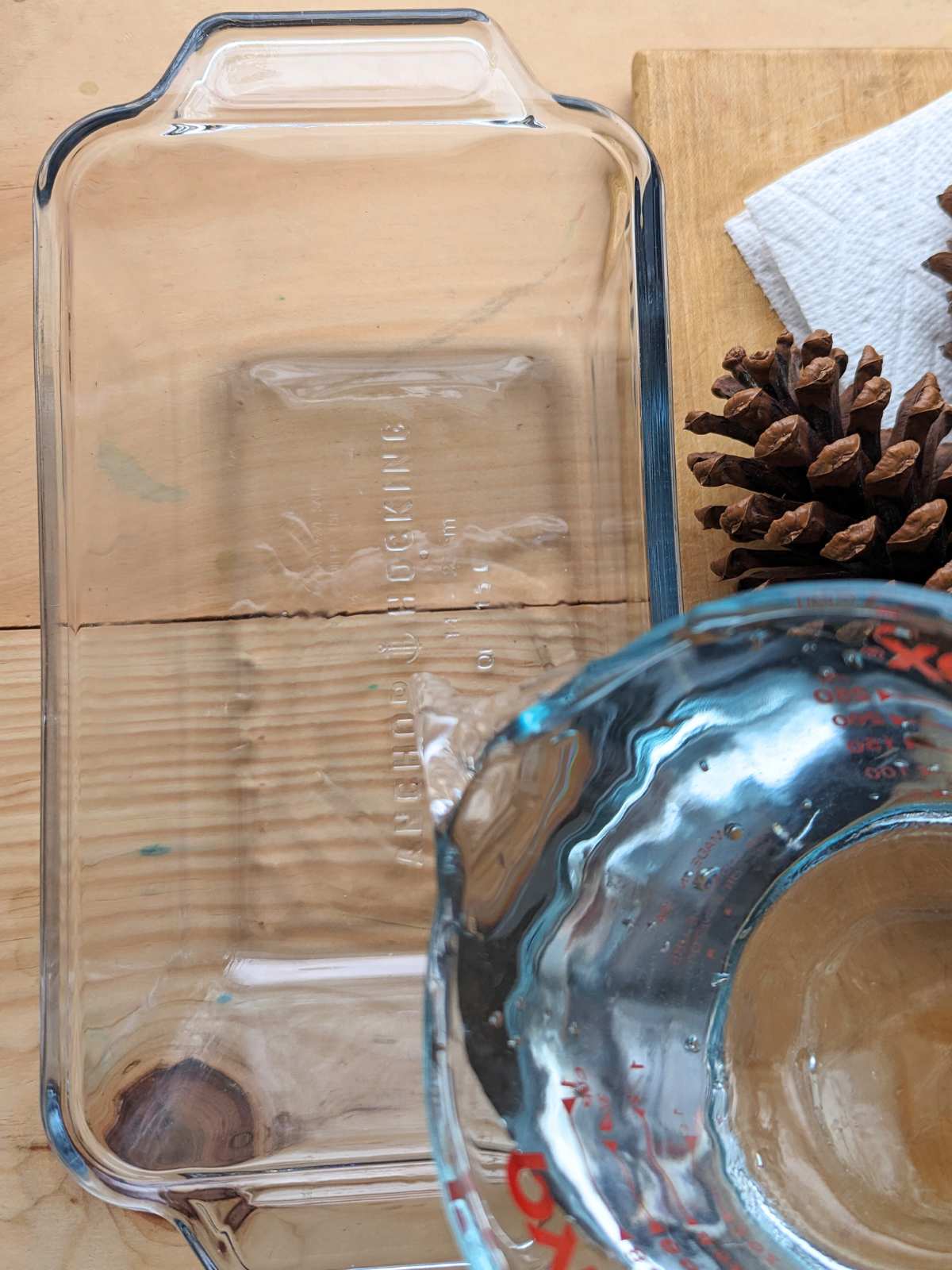
Place your pinecones one at a time into the water. You can do this with just one pinecone, several of the same species of pinecones, or different species of pinecones!
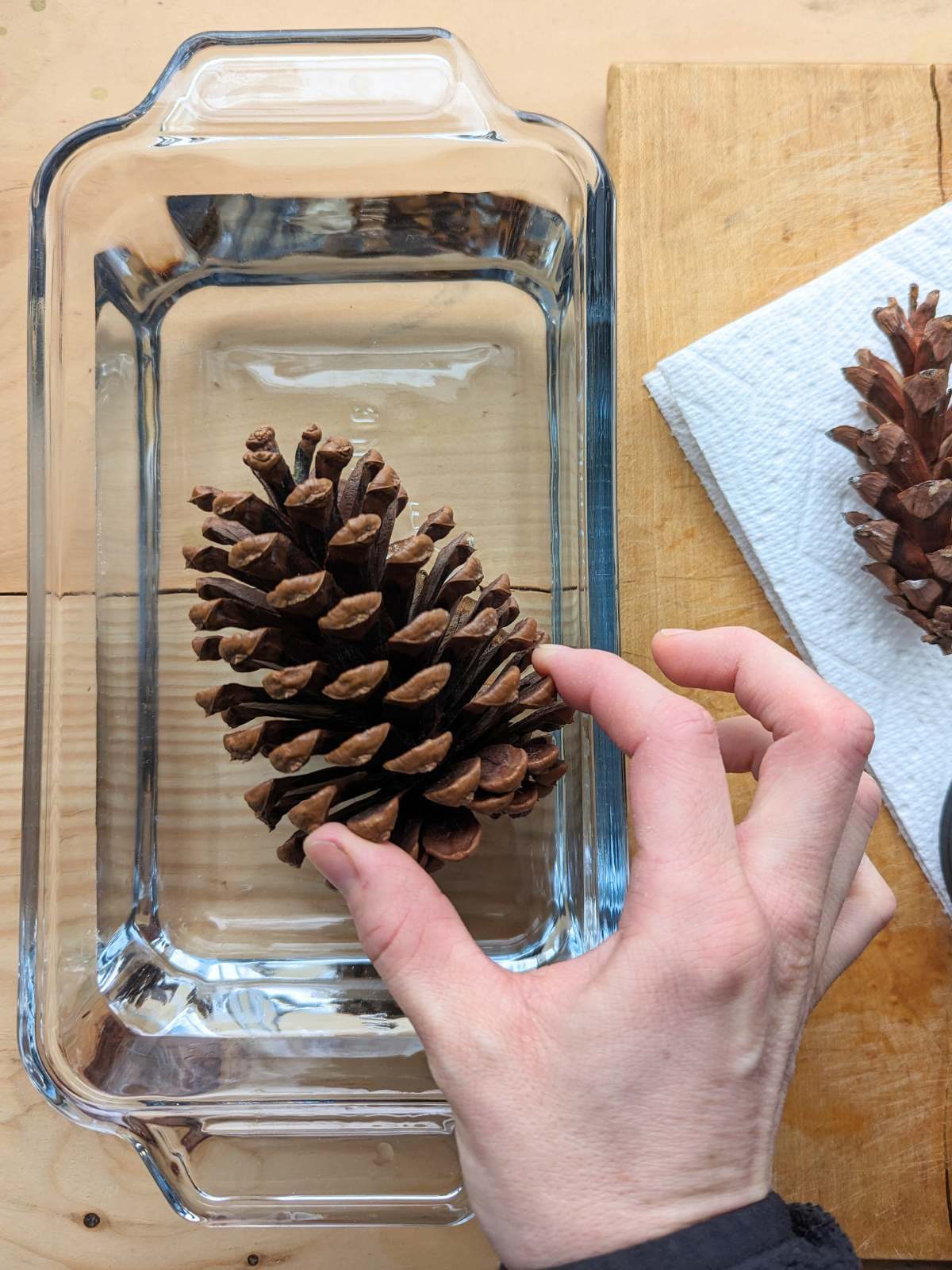
Press and spin the pinecones to get all sides wet. It is fun to see that pinecones actually float in water.
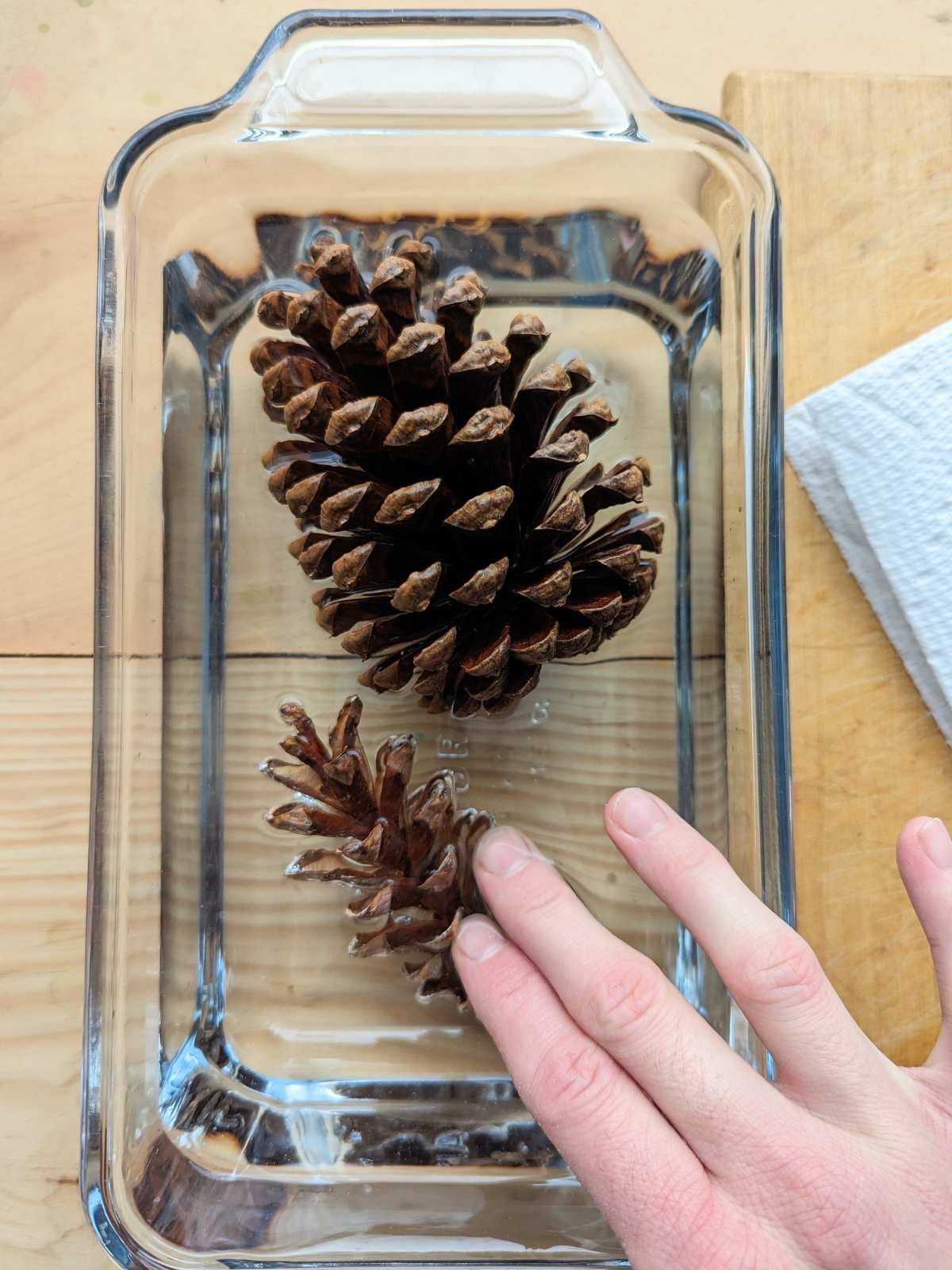
After a few minutes you might begin to see the pinecones changing. My White Pine pinecone began to close before the Caroline Pine. It took roughly 15 minutes for the White Pine to completely close. While the Caroline Pine took about 60 minutes.

These are all wonderful observations to talk about and write down on your observation sheet!
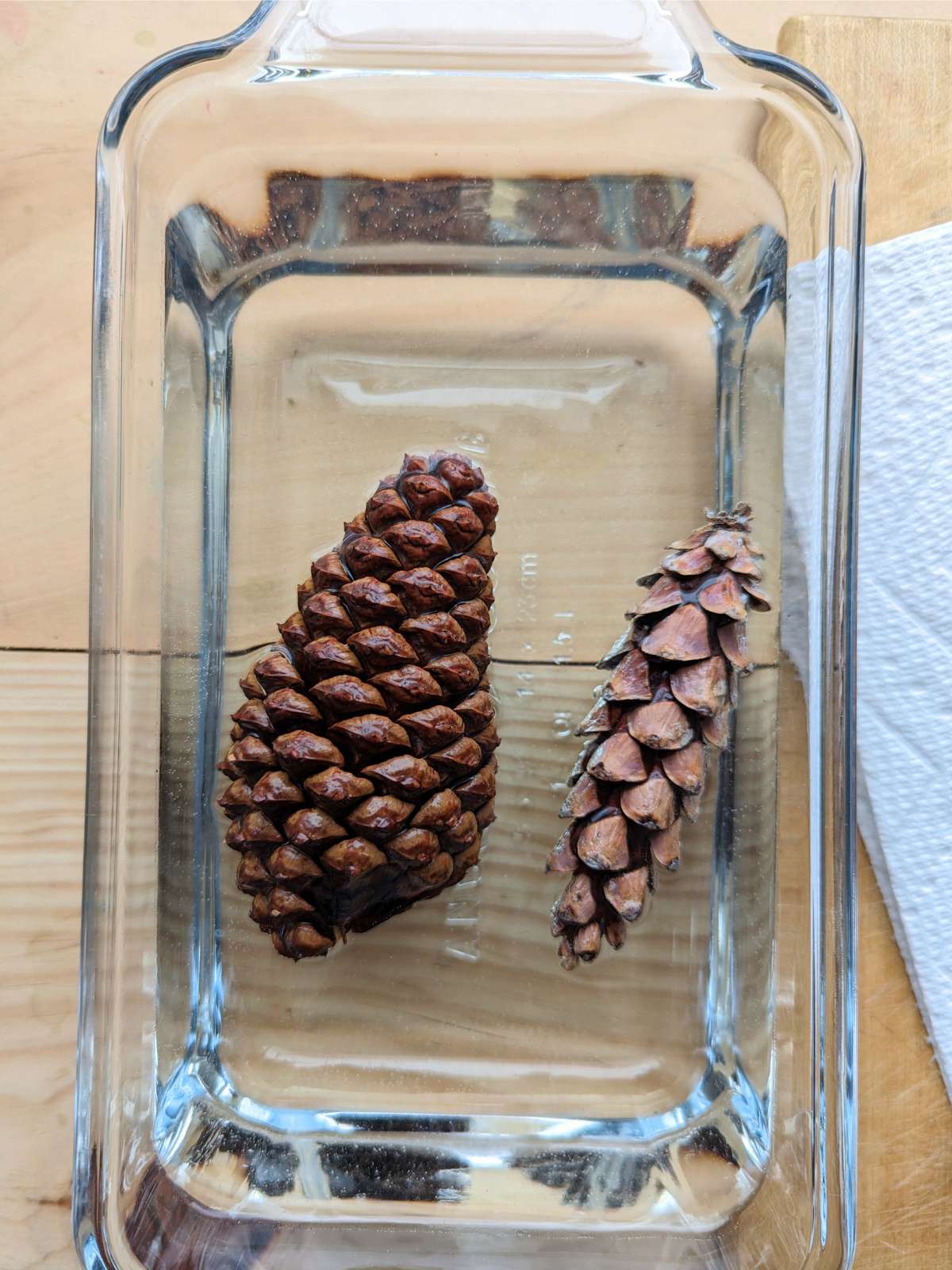
Once the pinecones are completely closed remove them from the water. I left both in the water until the second one closed because I wanted to compare the closed cones side by side.
Next, dry off the pinecones using a paper towel. I even shook the pinecones to remove any water trapped inside.
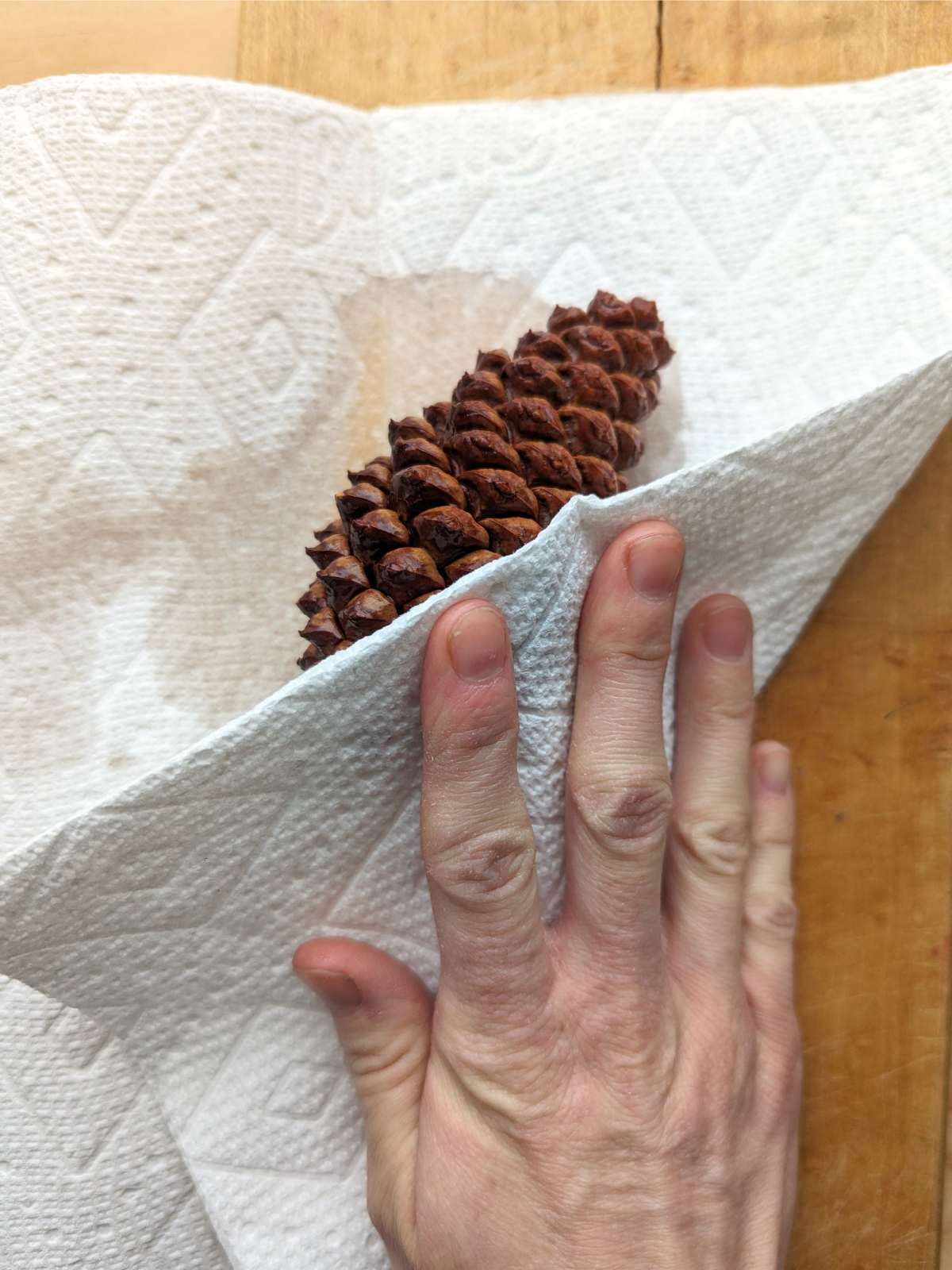
Leave in a warm sunny place to dry. Depending on the species of pinecone and the temperature will determine how long it takes for it to completely reopen.
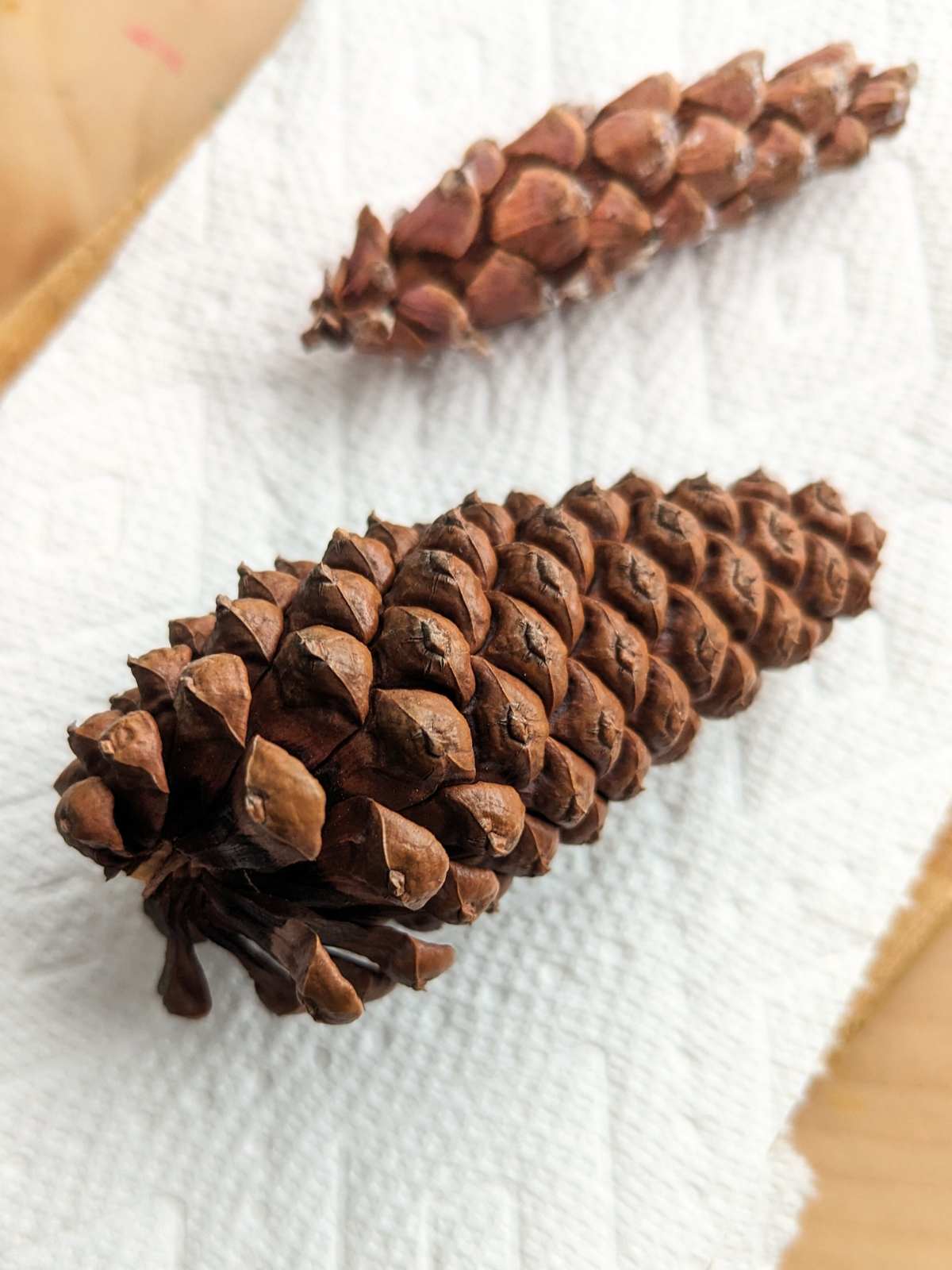
It was fun to observe our pinecones reopen from the bottom first! Fun fact, it took 2 full days before both pinecones were completely reopened! It was interesting to observe them both starting to open.

Activity Sheets
Want to turn this into a formal science lesson? You can use the activity sheets linked below to record your observations. On the worksheets is a spot to record predictions and observations throughout the activity!
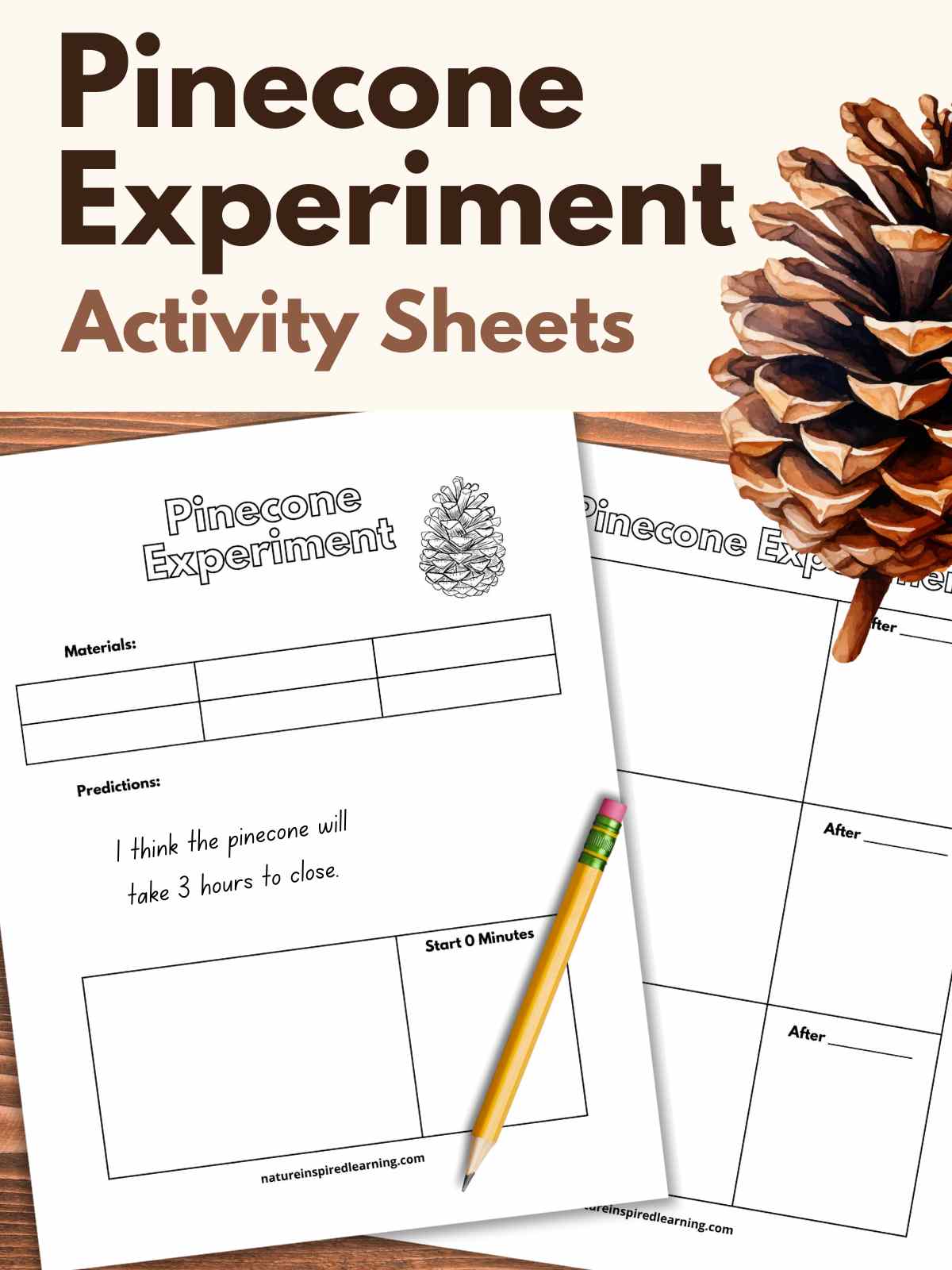
Encourage your child to draw illustrations and include a few labels. You can even color them in using crayons or colored pencils. Then they can describe in words what they are seeing.
Aside from observations, you can record questions you have or additional topics you want to research!
Additional Activities
Exploring science with your child? These additional activities are great for kids in preschool, kindergarten, 1st grade, 2nd grade, and 3rd grade.
Download
Pinecone Experiment
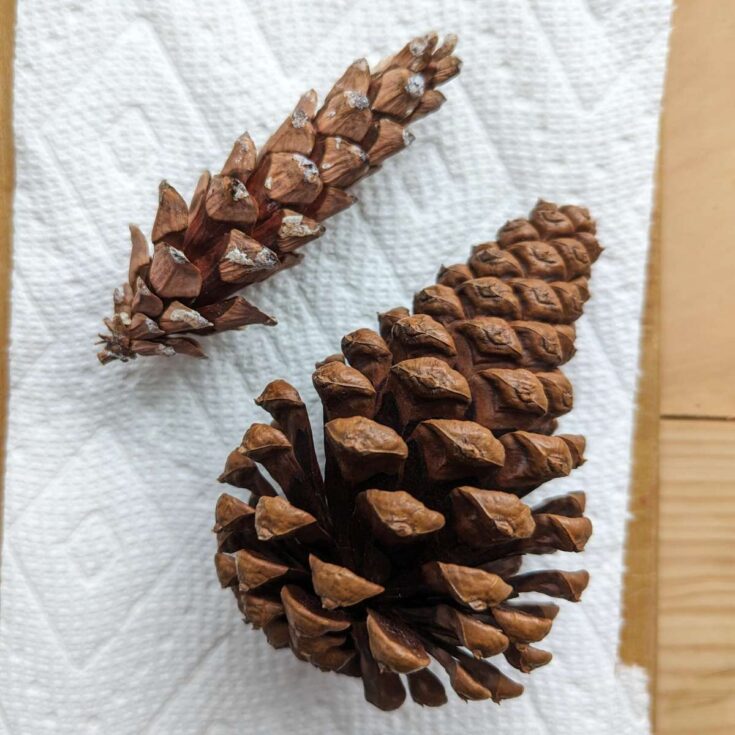
Explore why pinecones open and close in this easy science experiment.
Materials
- 2-3 Dry Pinecones
- Glass Baking Dish or Glass Jars
- Paper Towels
Tools
Instructions
- Pour water into a glass baking dish, leaving about 2 inches from the top of the container.
- Place your pinecones one at a time into the water.
- Observe for 15 minutes. Some pinecones begin to change quickly!
- Once the pinecones are all completely closed remove them from the water.
- Dry off the pinecones using a paper towel. Shake the pinecones to remove any water trapped inside.
- Leave in a warm sunny place to dry until they completely reopen.
Notes
Adult supervision is required for all parts of this activity.
Make sure to start with dry pinecones that are already open.
A clear glass jar or dish works best because you can see the pinecone through the glass.
My White Pine pinecone was completely closed after 15 minutes while the Carolina Pine pinecone closed after an hour.
It took two full days for the pinecones to reopen! Make sure put them in safe place were you can observe them over a few days.
Turn it into an experiment: Do pinecones respond differently to hot vs cold water? Do different species of pinecones take the same time to close? Does the size of the pinecone effect the time it takes to open and close? Let your child come up with their own question to explore.


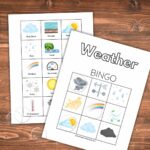

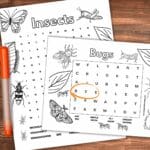
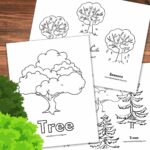

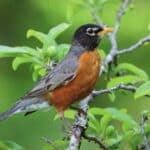


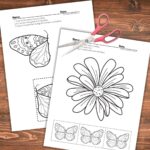
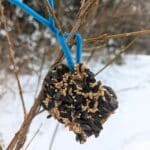
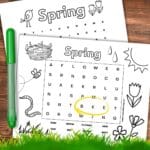
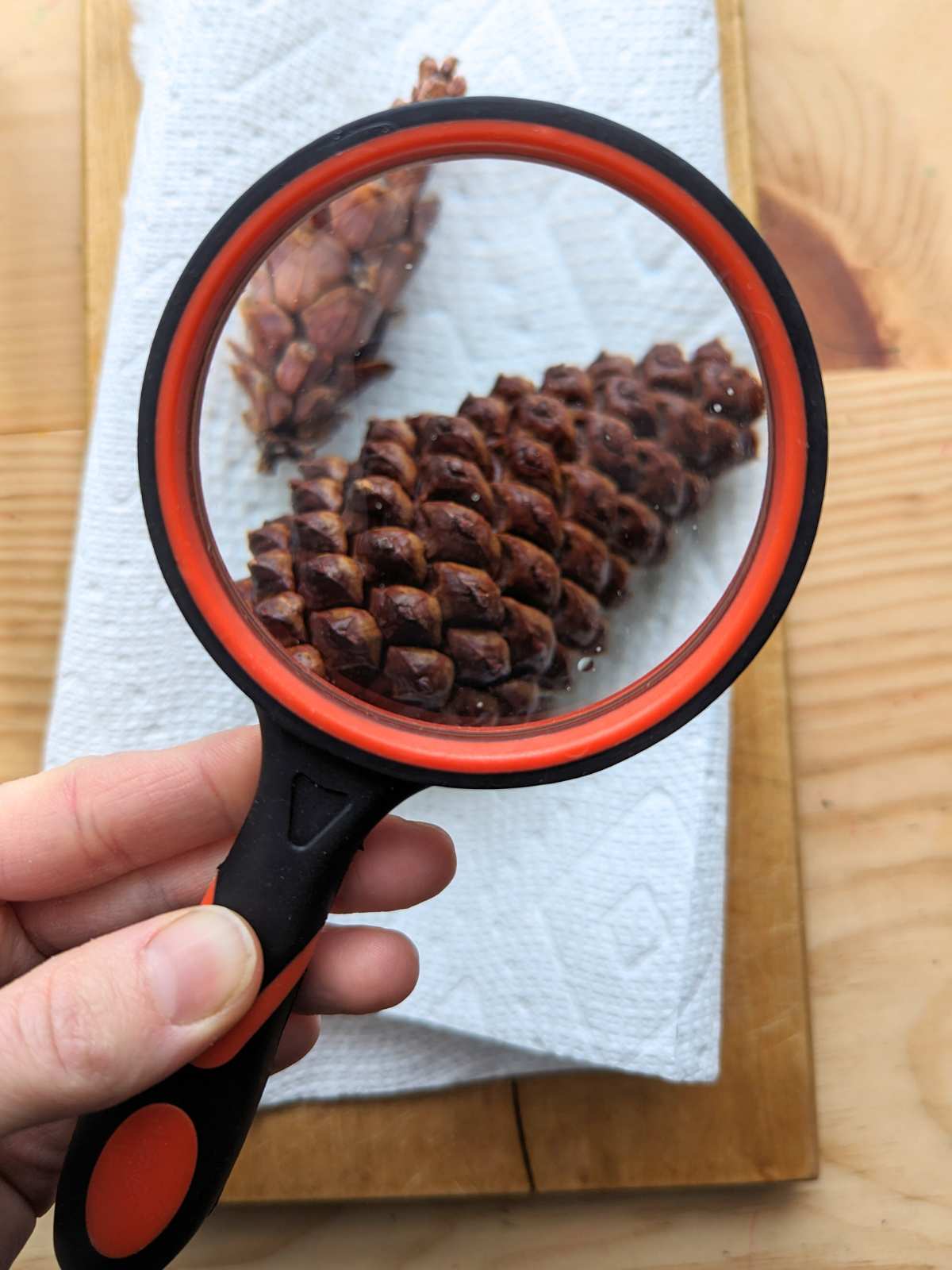
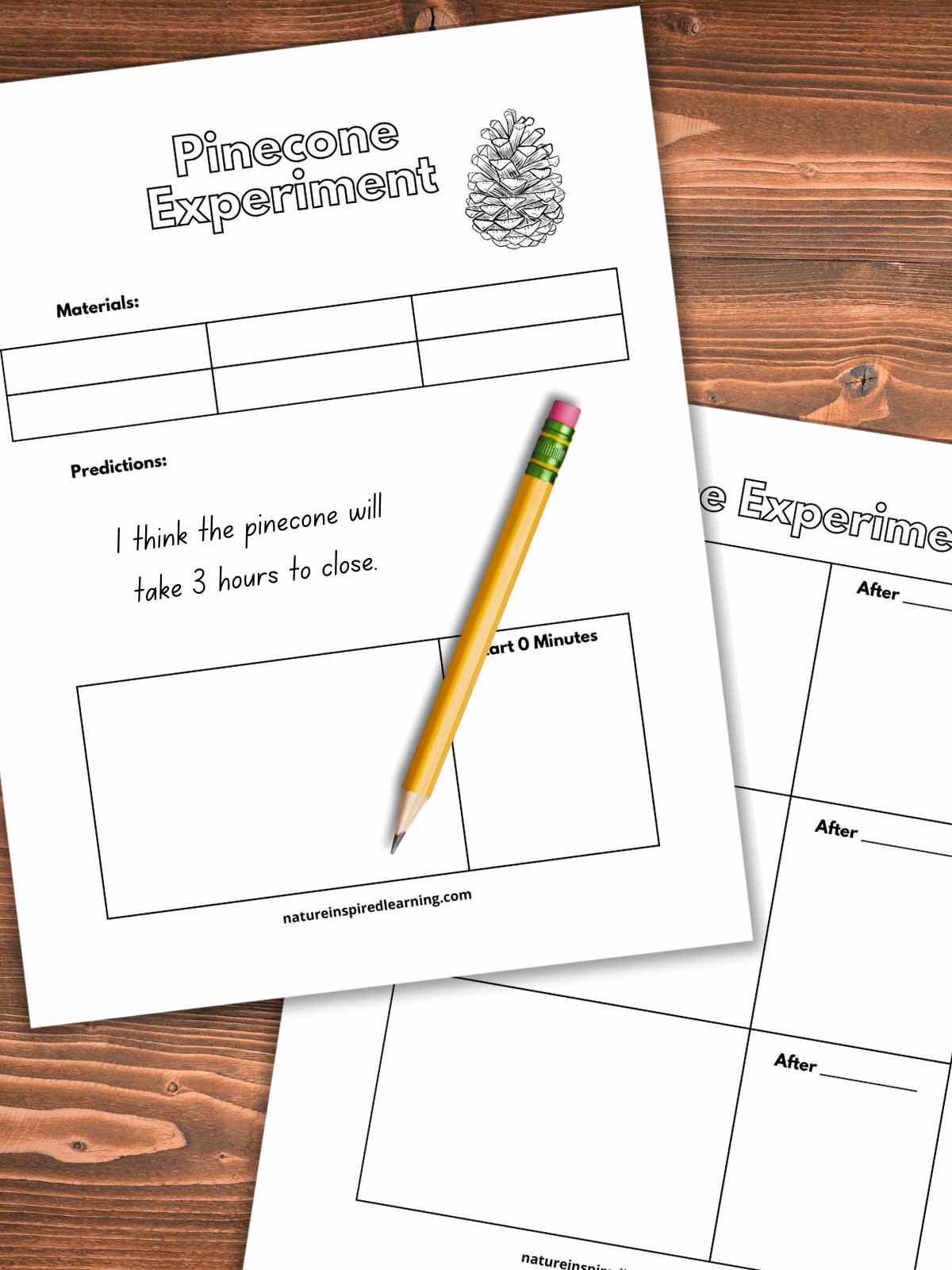




Comments
No Comments